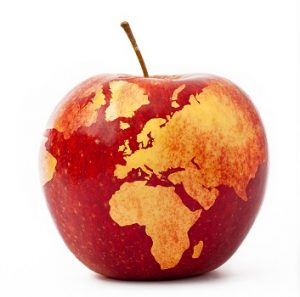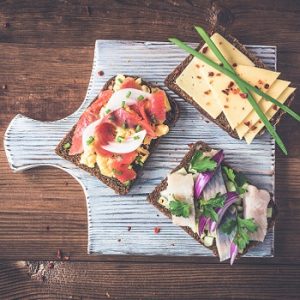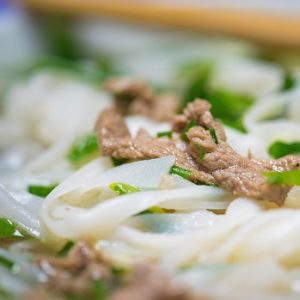
More evidence that low-calorie sweeteners are bad for your health
Studies show that artificial sweeteners can raise the risk of hypertension, metabolic syndrome, type 2 diabetes and heart disease, including stroke.

No single food or food component can protect you against cancer by itself.
But strong evidence does show that a diet filled with a variety of plant foods such as vegetables, fruits, whole grains and beans helps lower risk for many cancers.
Foods can fight cancer both directly …
In laboratory studies, many individual minerals, vitamins and phytochemicals demonstrate anti-cancer effects. Yet evidence suggests it is the synergy of compounds working together in the overall diet that offers the strongest cancer protection.
… And indirectly
According to the American Institute for Cancer Research (AICR) and the World Cancer Research Fund’s (WCRF) second expert report and its updates, carrying excess body fat increases the risk of ten cancers.
Vegetables and fruits are low in calories, which help us get to and stay a healthy weight. Whole grains and beans are rich in fibre and moderate in calories, which also help in weight management efforts.
That is why AICR recommends filling at least 2/3 of your plate with vegetables, fruit, whole grains and beans.
Most recently the AICR came up with a list of unusual meals/foods whose combined ingredients/nutrients can help fight cancer if incorporated into your regular diet. You might be surprised at what they are…
A New Rainbow of Color
We all get bored eating the same foods over and over again. AICR recommends using these international favorites as an introduction to new spices, fruits, vegetables and more. It’s a great way to jazz up a plant-based diet that can help you get to – and stay at– a healthy weight.
Each suggestion also included ideas on how you can recreate or adapt the international favorites at home, so check out their recipes suggestions.
Smørrebrød – Denmark
Smørrebrød is a traditional open-faced sandwich. It’s often made with dark whole-grain rye bread and topped with nutrient-rich beets (or other veggies), herring and a poached egg.

Who says a sandwich can’t be healthy? Danish Smørrebrød combines multiple healthy ingredients [Photo: Bigstock]
Cortado – Spain, Portugal, Latin America
From the Spanish word cotar, meaning cut, a cortado is espresso cut with milk. It’s a small (3-4 ounce) drink usually made of a 1:1 or 1:2 ratio of milk added to espresso. The caramel sweetness of the espresso paired with the steamed milk means you may not even need to add sugar.
Try it: Coffee is one of AICR’s Foods that Fight Cancer. If you don’t have an espresso machine, there’s a good chance your local coffee shop will make it for you
Paella – Spain
This savory one-pan rice dish is as varied as the chefs that make them. Paella (pronounced pah-ey-yuh) essentials are rice flavored with saffron and garlic, mixed with veggies and protein and cooked in a shallow pan. Traditional paella uses chicken or rabbit, white beans, and snails. Other variations include shrimp, mussels, and clams.
Try it: AICR’s Vegetarian Paella features brown rice and is packed with vegetables.
Mercimek Köftesi – Red Lentil Kofte (Turkey)
Köfte refers to ground meat (lamb or beef) or vegetable balls seasoned with plenty of herbs and spices. The vegetarian version is made with red lentils and fine bulgur, sprinkled with parsley and green onions.
Red lentil legumes provide protein and bulgur is a whole grain packed with fibre, which is linked to decreased risk of colorectal cancer.
Try it: Try high-school winner’s Mediterranean Faux-Lafel as is, or add some cooked lentils and your favorite spices.
Pho – Vietnam

Close-up view of Vietnamese noodle soup named Pho. Pho is the most famous food in Vietnam. [Photo: Bigstock]
Try it: Use our primer on creating delicious soups to customise your own light and satisfying Pho dish with different add-ins.
Cherimoya – Central and South America
You can now find this sweet and creamy fruit at many markets. Tasting like a cross between a banana and pineapple, cherimoya is known as the ice cream fruit. A cheriyoma will give you plenty of fibre, vitamins C, vitamin B6, and riboflavin and potassium.
Try it: Eat it fresh, add to fruit salads or chill it and eat it with a spoon. You can remove the seeds, freeze for 4 to 5 hours then blend to make a creamy cherimoya sorbet.
Mojo Sauce– Cuba
Mojo refers to any sauce made from garlic, olive oil, spices and citrus such as orange juice. It adds flavor to everything to seafood, pork and of course, Cuban sandwiches.
Try it: Create your own mojo marinade with an assortment of herbs and spices – cilantro, oregano, cumin and garlic. In AICR’s Mojo marinated grilled turkey, the citrus tenderises the turkey and keeps it moist throughout grilling.

Please subscribe me to your newsletter mailing list. I have read the
privacy statement